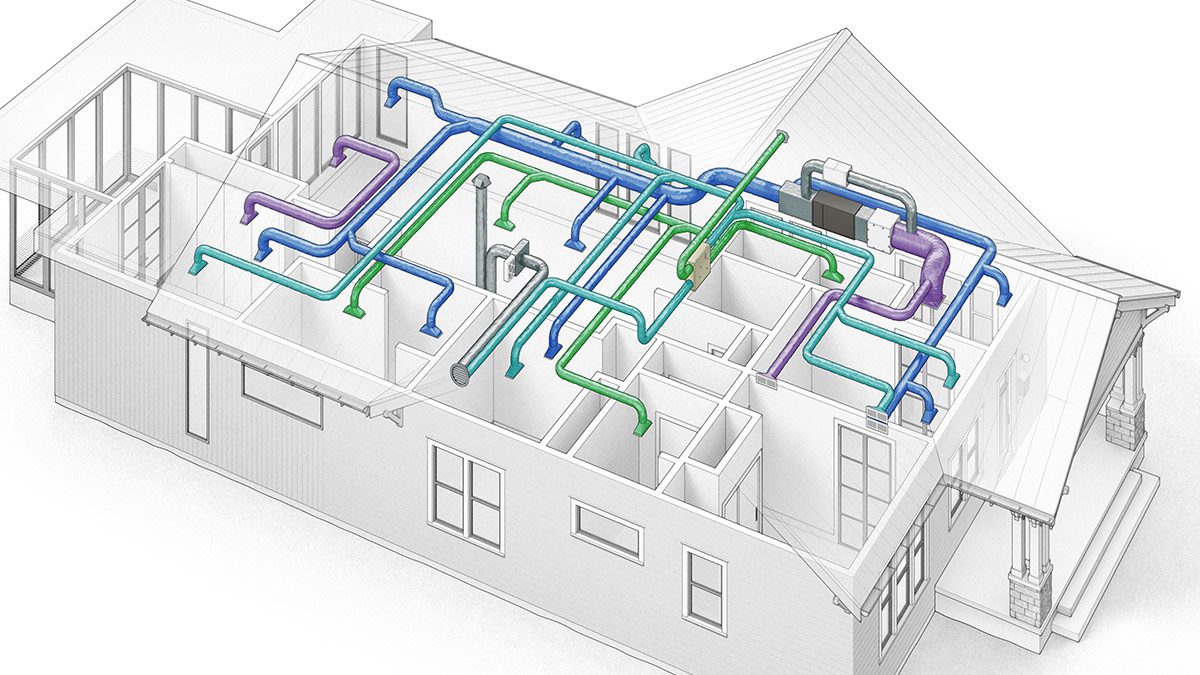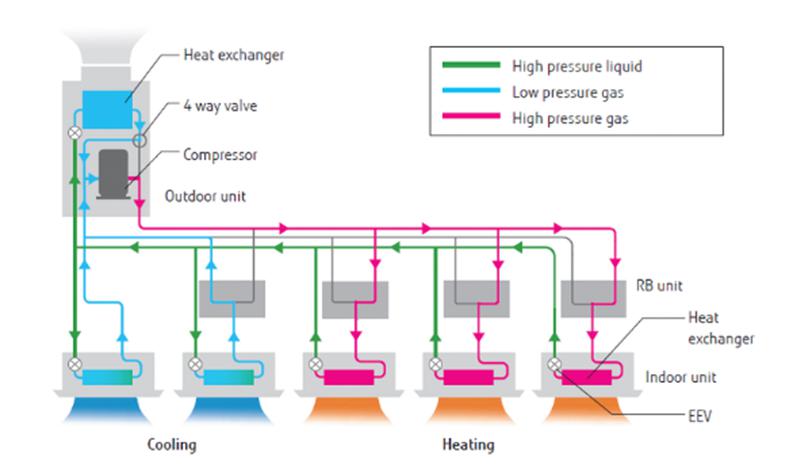VRV/VRF Design
What is VRV/VRF Design?
VRV (Variable Refrigerant Volume) and VRF (Variable Refrigerant Flow) systems are advanced climate control solutions that provide efficient and customizable heating and cooling for commercial and residential buildings. These systems are designed to offer precise temperature control across multiple zones or rooms within a building, making them ideal for spaces where energy efficiency and comfort are priorities.

How Does VRV/VRF Work?
The core principle behind VRV/VRF systems is their ability to regulate the flow of refrigerant to different indoor units based on the specific cooling or heating needs of each zone. Here’s how it works:
- Central Outdoor Unit: The system starts with a central outdoor unit that compresses and circulates the refrigerant. This unit is connected to multiple indoor units located in different rooms or zones within the building.
- Variable Refrigerant Flow: Unlike traditional HVAC systems that deliver a fixed amount of refrigerant to all units, VRV/VRF systems can adjust the amount of refrigerant flowing to each indoor unit. This means only the required amount of refrigerant is used, optimizing energy consumption.
- Indoor Units: Each zone has its own indoor unit, which can be controlled individually. This allows different rooms to maintain different temperatures based on the occupants’ preferences.
- Smart Control System: The system is equipped with smart controls that monitor the temperature in each zone and adjust the refrigerant flow accordingly. This not only enhances comfort but also improves energy efficiency by avoiding unnecessary cooling or heating.

Key Components of VRV/VRF Design
- Outdoor Unit: The heart of the system, responsible for compressing and circulating the refrigerant. It can be connected to multiple indoor units, providing flexibility and scalability.
- Indoor Units: These are installed in each zone or room, providing the desired heating or cooling. They come in various types, including wall-mounted, ceiling cassette, and ducted units, to suit different spaces.
- Refrigerant Piping: A network of pipes that connects the outdoor unit to the indoor units, allowing the flow of refrigerant throughout the system.
- Control System: The brain of the operation, it manages the flow of refrigerant and ensures that each zone receives the right amount of heating or cooling. Modern systems often include advanced controls, such as remote access via smartphone apps, making it easy to adjust settings from anywhere.
- Heat Recovery (Optional): Some VRV/VRF systems offer heat recovery capabilities, allowing the system to simultaneously heat and cool different zones. This is especially useful in large buildings where different areas may have varying climate control needs.
Why Choose VRV/VRF?
VRV/VRF systems are known for their energy efficiency, flexibility, and ability to provide customized comfort. They are ideal for large commercial buildings, multi-story offices, hotels, and even high-end residential properties. By delivering the right amount of cooling or heating where it’s needed most, these systems help reduce energy waste and lower operational costs.
In summary, VRV/VRF design represents a modern approach to climate control, combining advanced technology with practical benefits. Whether you’re looking to improve comfort, enhance energy efficiency, or reduce your carbon footprint, VRV/VRF systems offer a reliable and effective solution.

